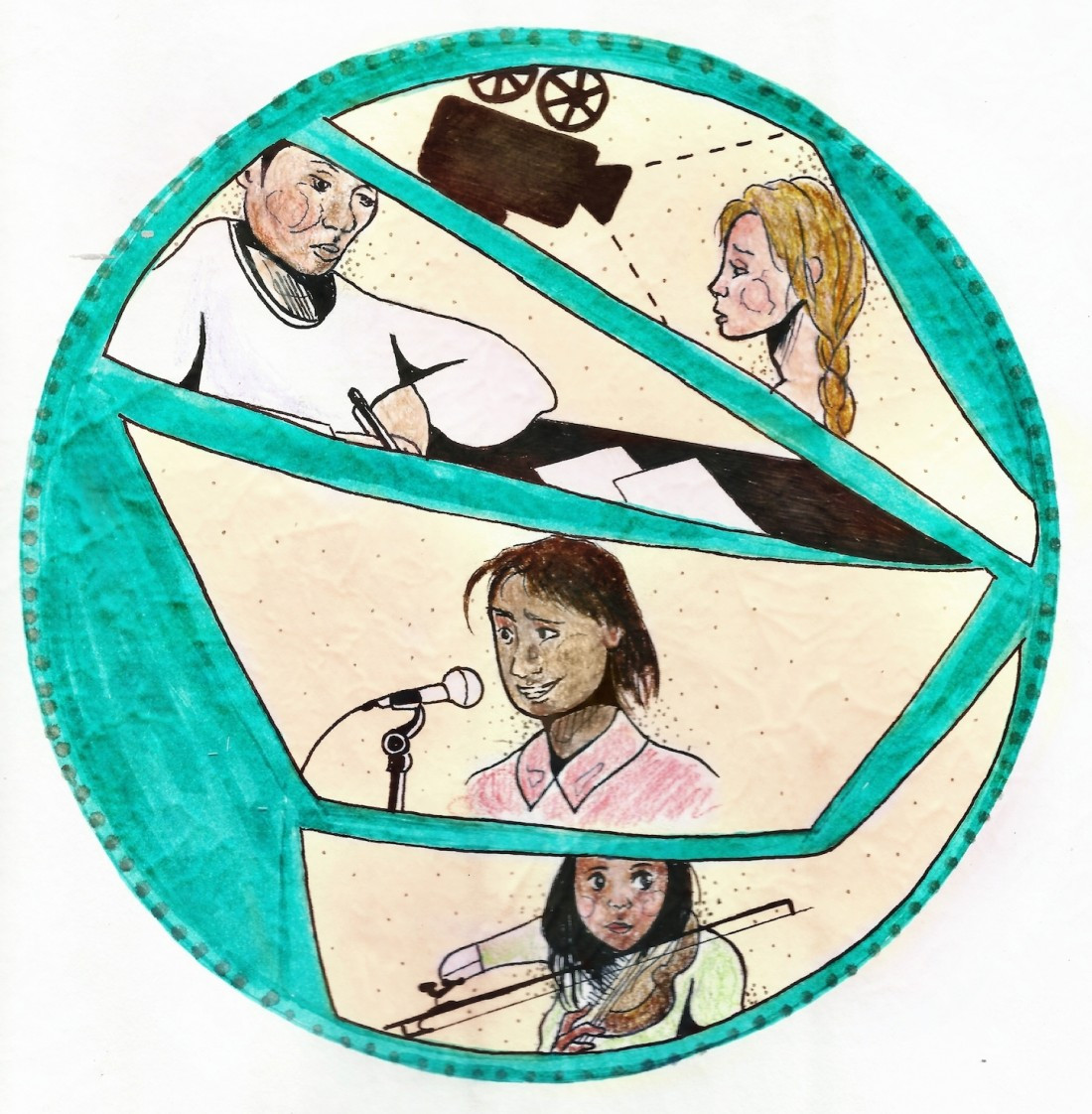Standing out, fitting in
The balancing act of racialized identities in the arts

When Primrose Madayag-Knazen, a Filipino-Jewish playwright and aspiring novelist, wrote and directed her first Fringe play, Cyber in 2000, race was not on her mind.
“I just thought ‘these are cool ideas!’” she says.
When Madayag-Knazen chose a diverse cast for the project, she did not even realize she was doing it until the reviews made her colour blind casting a focal point. She began to think about her race in relation to her art.
“Everything I did was a statement,” Madayag-Knazen says.
Though Madayag-Knazen felt she was often interpreted as racialized by white crowds, she’d been labeled as a “coconut” (a slur meaning brown on the outside and white on the inside) within her own culture.
In her 2002 piece Shades of Brown, Madayag-Knazen featured characters on both sides of the spectrum, the coconut and “FOB.” Madayag-Knazen explains that FOB stands for “Fresh off the Boat” and her characters experienced lateral racism for being too Filipino and not Filipino enough.
Chad Anderson, local comedian, has similarly been criticized for “not being native enough” on stage, but writing jokes that relate to his background has been a gradual process.
“It sounds shitty, but I didn’t think about race that often growing up,” Anderson says.
Because he was raised by a white family and had predominantly white friends, he didn’t identify with his heritage until he got sober and turned to cultural rituals.
“Now I go to sweats and sundance and it’s something I’m proud of,” he says.
He points out that often jokes about race don’t do anyone any favours.
“Cheesy stereotypical jokes, it’s not exploring anything new. Now when I write a joke that has anything to do with race, I try to say, ‘Here’s a stereotype and here’s why it’s messed up.’”
Though racialized individuals often face prejudice based on their visual differences, Polish actress Monika Thurn Und Taxis finds that her accent holds her back in the audition room.
“I’ve been told I don’t really fit anywhere,” she says. “It’s something I’ve been told a million times. You must have a standard American accent.”
She struggles with balancing a focus on western culture and embracing the culture she came from.
Taxis, too, knows the frustration of not being enough.
“I actually lost a part for a Polish accent to somebody. Mine wasn’t fake enough. They don’t want it to sound authentic. Accents on TV are always very exaggerated,” she says.
Taxis has decided to join artists like Knazen and Anderson by making her own work.
“There are so many stories that should matter,” she says. “Sometimes, there’s no work for you because nobody wrote it yet. You have to create a new world and say ‘I’m not supposed to fit in.’”
Keep up with the artists on Twitter: Primrose Madayag Knazen (@PrimroseMK) Chad Anderson (@Chadillmatic) Monika Thurn Und Taxis (@MoniThurnUTaxis)
Published in Volume 70, Number 22 of The Uniter (March 3, 2016)






